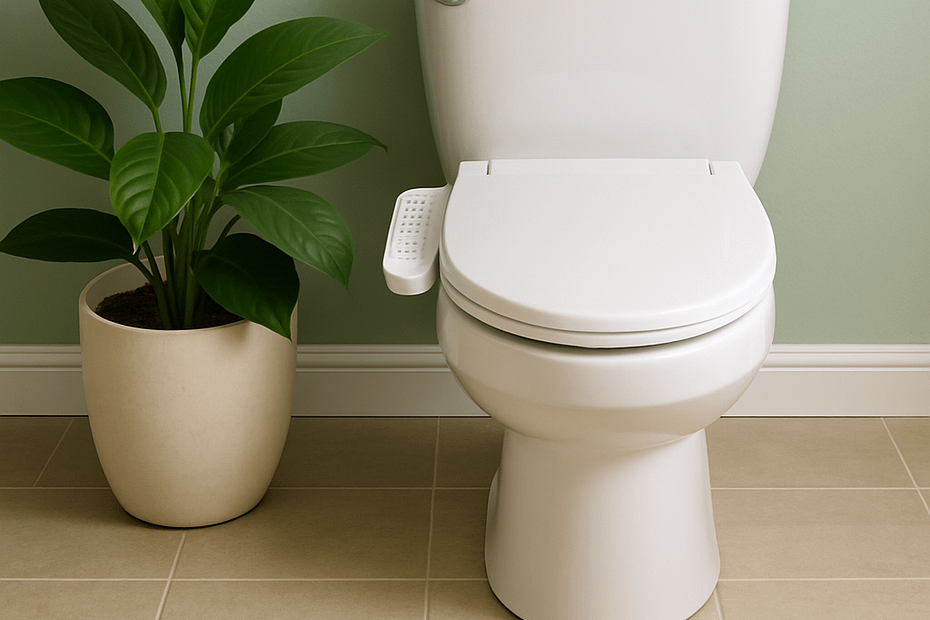
If you’re still relying on toilet paper alone, it might be time to rethink your bathroom habits. Bidet toilets are quickly becoming the go-to upgrade for eco-conscious, budget-savvy, and hygiene-minded homeowners. In this guide, we’ll break down what a bidet toilet is, its benefits, a bit of surprising history, installation tips, and answers to all your top questions.
What Is a Bidet Toilet?
At its core, a bidet toilet is a toilet or toilet-like fixture equipped with a built-in faucet that sprays water for cleaning after using the bathroom. Some models are standalone fixtures next to your toilet, while others are integrated into the toilet seat itself. Today’s bidets come packed with modern features like heated seats, adjustable water pressure, air dryers, and even night lights.
✅ Fun Fact: A bidet uses about 16 ounces of water per use — way less than the 37 gallons of water used to produce a single roll of toilet paper!
A Quick History Lesson: From Brothels to Modern Bathrooms
Bidets first popped up in France in the 1700s, used as a personal hygiene tool among the aristocracy. During World War II, American soldiers encountered bidets in European brothels, which unfairly created a stigma back home. But times have changed: Today, bidets are prized worldwide for hygiene, comfort, and sustainability — far from their misunderstood past.
Why You Should Switch to a Bidet Toilet
1. Better Hygiene
Bidets offer a deeper, gentler clean than toilet paper, helping to reduce irritation, infections, and conditions like hemorrhoids and diverticulitis.
2. Big Cost Savings
By switching to a bidet, the average household can save up to $110 a year on toilet paper. Over a decade, that’s over $1,000 saved — just for cleaning yourself smarter.
3. Eco-Friendly Benefits
Producing toilet paper destroys millions of trees and wastes billions of gallons of water every year. Bidets dramatically cut your environmental footprint — and with features like eco-mode spray settings, they’re greener than ever.
4. Comfort and Luxury
Today’s bidets offer soothing warm water washes, heated seats, built-in deodorizers, and air dryers — turning every bathroom trip into a spa-like experience.
DIY Installation: How Hard Is It to Install a Bidet Toilet?
Good news: Installing a bidet attachment or seat is surprisingly easy for most homeowners!
Basic steps for a DIY bidet installation:
- Turn off your toilet’s water supply and drain the tank.
- Remove the existing toilet seat (if installing a seat-style bidet).
- Install the bidet attachment and connect the T-valve to split the water supply between the tank and the bidet.
- Attach the hoses and tighten everything securely.
- Turn the water back on and test the bidet!
🔧 Tools you might need: Adjustable wrench, screwdriver, plumber’s tape (and about 30 minutes).
Important Tip:
If you’re installing a freestanding bidet fixture, it will require plumbing work similar to adding a second toilet, so you might need a professional for that setup.
Frequently Asked Questions About Bidet Toilets
Are bidet toilets more hygienic than toilet paper?
Absolutely. The gentle water spray removes waste more effectively than dry wiping alone, minimizing irritation and infection risks.
How much money can you save by using a bidet?
On average, using a bidet can save you around $110 per year in toilet paper costs — and even more when factoring in the cost of wipes and plumbing repairs from clogged toilets.
Do bidet toilets use a lot of water?
Nope! A bidet typically uses less than half a liter of water per use — far less than the water footprint of toilet paper manufacturing.
Can I install a bidet by myself?
Yes! Most bidet seats and attachments are designed for easy DIY installation without professional plumbing skills.
Are bidet toilets common in the U.S.?
While not yet the norm, bidets are gaining massive popularity across the U.S., especially in eco-friendly and health-conscious households.
Do bidets help with health conditions?
Yes. Bidets are often recommended by doctors for individuals dealing with hemorrhoids, sensitive skin, or after surgery. The soothing, non-abrasive cleaning can help prevent irritation and promote healing.
What features should I look for in a bidet?
Look for adjustable water temperature, spray pressure controls, heated seats, air dryers, self-cleaning nozzles, and even deodorizing functions.
Were bidets really used in brothels?
Historically, yes, but that association is outdated. Bidets today are viewed as premium hygiene devices, not symbols of any social stigma.
Final Thoughts: Time to Join the Bidet Revolution?
Whether you’re motivated by saving money, boosting hygiene, or helping the planet, investing in a bidet toilet is one of the smartest bathroom upgrades you can make.
With so many DIY-friendly models available, there’s never been a better time to make the switch.
👉 Ready to refresh your bathroom experience? Installing a bidet could be the best (and easiest) home improvement you make all year!










